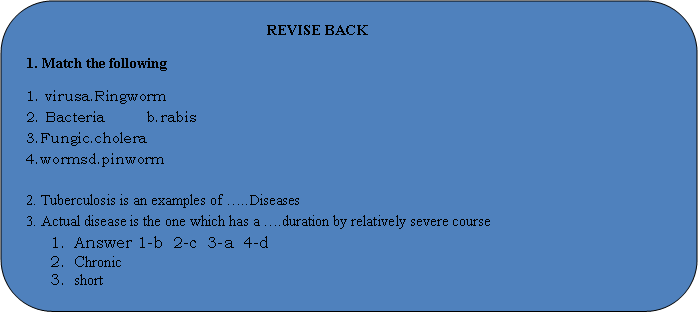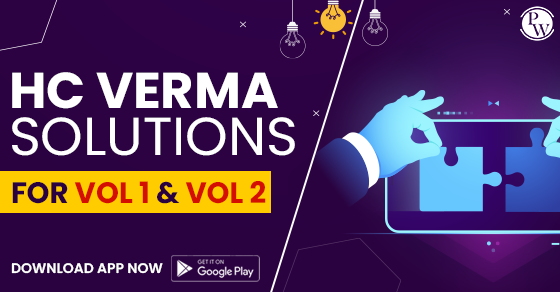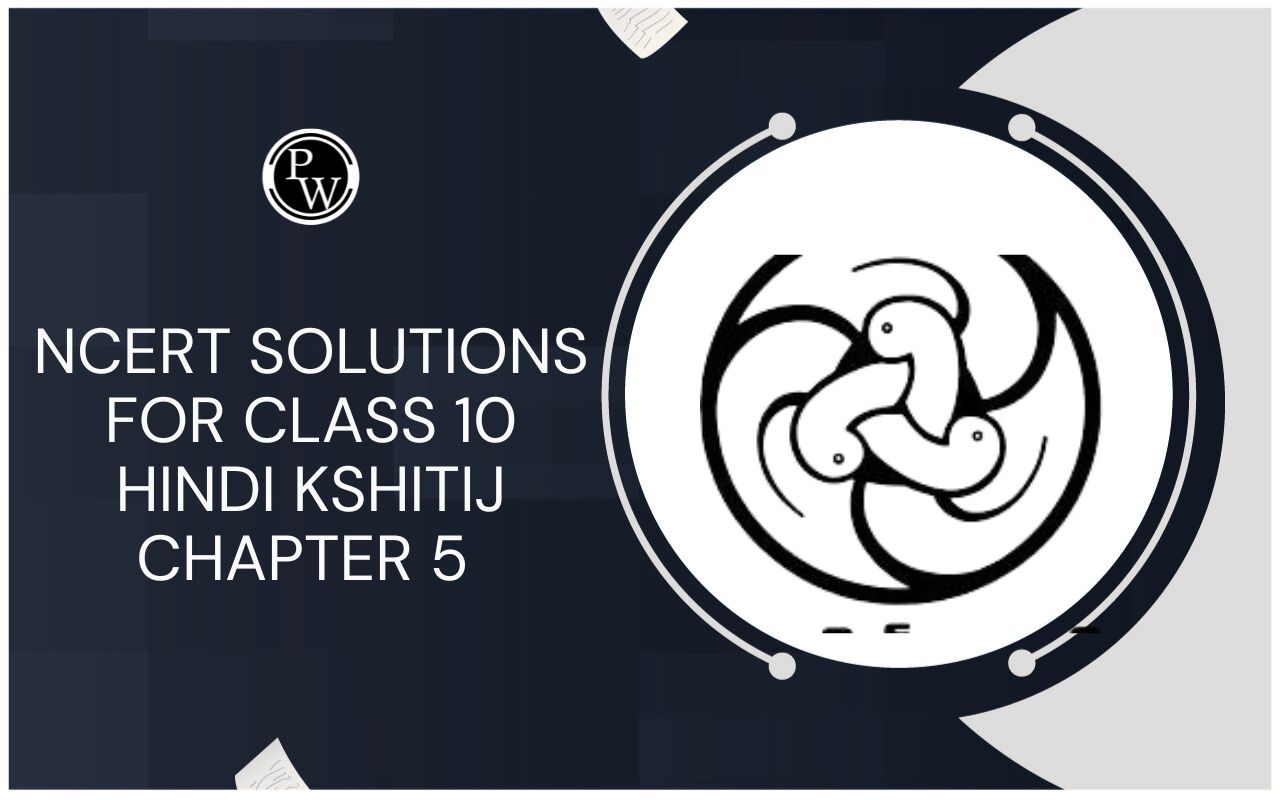
TYPES OF DISEASES
Why do we fall ill of Class 9
TYPES OF DISEASES
Diseases are broadly grouped into two categories:
- Congenital diseases
- Acquired diseases
CONGENITAL DISEASES
These diseases are those which are present since birth. They are caused due to a genetic abnormality or due to metabolic disorders, malfunctioning of any organ or organ system. These diseases may be inherited.
ACQUIRED DISEASES
These diseases are those which develop after birth. These are futher classified into categories;
- Communicable or infectious diseases: These diseases are caused by pathogens/infectious agents such as bacteria, viruses, fungi, protozoans, worms, etc. These diseases can spread from diseased person to healthy parson by means of air (droplet method), water, food, insects, physical contact, etc.,e.g. tuberculosis, malaria, diarrhea etc.
- Non-Communicable or Non-Infectious diseases: These diseases can’t be spread through infected persons to healthy persons. e.g. Scurvy
Table: Various Pathogens and Diseases Caused By Them.
|
S.No |
Type of pathogens |
Common diseases caused by them |
|
1 |
Viruses |
Common Cold, Influenza, Measles, Mumps, Poliomyelitis, Rabies, Small Pox, Chicken Pox, Yellow Fever, Aids Etc. |
|
2 |
Bacteria |
Cholera, Typhoid, Tuberculosis, Tetanus, Diphtheria, Pneumonia, Syphilis, Gonorrhoea, Leprosy Etc. |
|
3 |
Rickettsiae |
Typhus Fever, Tick Fever Etc. |
|
4 |
Protozoa |
Malaria, Amoebic Dysentery, Sleeping Sickness Etc. |
|
5 |
Fungi |
Ringworm, Athlete’s Foot Etc. |
|
6 |
Worms |
Filaria, Ascariasis, Cysticercosis, Pinworm |
|
7 |
mites |
Scabies |

INFECTIOUS DISEASES
Diseases which can be transmitted directly or indirectly from one individual to another are called communicable or contagious. These diseases are caused by micro-organisms and worms.
The diseases are spread to the healthy person in two ways :
Direct transmission
Indirect transmission
DIRECT TRANSMISSION
Pathogens are transmitted from an infected person to a healthy person directly without an intermediate agents.
Its occur in following ways :
By direct contact with an infected person e.g. contagious diseases like chicken pox, smallpox, athlete’s foot, measles, leprosy, ringworm, gonorrhoea, syphilis etc.
Droplet infection (through coughing, sneezing and spitting of infected persons) e.g. diphtheria, influenza, tuberculosis, measles, mumps, whooping cough, etc.
Contact with soil, e.g. bacterial cysts of tetanus.
Animal bites e.g., rabies viruses.
Transplacental transmission: The viruses of German measles and AIDS; and bacteria of syphilis can be transmitted from the maternal blood into foetal through placenta.
INDIRECT TRANSMISSION
When the pathogens can be transmitted from the reservoir of infection to a healthy person through some intermediate agents. Occurs in following ways:
Vector borne diseases : e.g. malaria (female Anopheles ), dengue ( Aedes mosquito), kalaazar (sandfly), cholera (housefly), etc.
Vehicle borne : Pathogens of cholera, dysentery, typhoid etc. are transmitted by agencies like food, water etc. AIDS is spread by blood or semen of suffering donors.
Air borne : e.g. influenza, epidemic typhus.
Formite borne : In this, the pathogens are spread through contaminated articles like handkerchiefs, towels, garments, utensils, crockery, surgical instruments, books, toys, door handles syringes, (fomiteborne, i.e., through inaminate articles other than water and food).
Unclean hands : e.g. Ascaris ( Ascarislumbricoides ) and Enterobiasis ( Enterobiusvermicularis ).
TREATMENT OF INFECTIOUS DISEASES
The basic concept behind the treatment process is to target the biochemical pathways occurring inside an organism for this certain drugs like antibiotics are prepared to after or stop the biochemical reaction of the microbes at some stage to stop them to produce infections, toxins or to kill them or to check their further growth and multiplication. There are two ways in which these diseases are treated they are :
- Reducing the symptoms : By this, infection is not cured but some of the symptoms like fever, pain, aches, inflammation can be reduced to make the patient full comfortable. this is done by medicines like pain killers etc.
- killing infectious agents : this can be done by targeting the biochemical pathways of infectious agents using specific drugs.
Drugs :
chemical compounds that targets a particular reaction among the chain of reactions involved in the biochemical pathway by reacting with some substrates of that reaction and resulting in an undesirable product so that reaction cannot proceed further and stop infections and can kill the microbes. they do not affect human cells.
Antibiotics :
Antibiotic are chemicals that kill or stop the growth of certain kinds of microbes. They help our body to fight against diseases. The development of antibiotics began with the discovery of penicillin by sir Alexander Flemming in 1928. Flemming noticed that an agar plate inoculated with bacterium Staphylococcus aureus had become contaminated with a mould. He future noticed the presence of a clear zone in the agar plate in which breakdown of the bacterial cells had occurred. Detailed studies led to the isolation of an inhibitory substance from the mould. As the mould was identified as Pencillium, Flemming called the antibiotic penicillin. Soon other antibiotics were isolated. Some well know antibiotics are streptomycin, gramicidin and tetracycline. the antibiotics have been obtained from either bacteria or fungi.
These are the drugs specific for curing bacterial diseases. they either ceases the formation of cell wall or interferes in their metabolic activities like production of proteins. This kills or stops the growth of bacteria.
Antibiotics are not effective for viruses or it is difficult to make antiviral diseases because Viruses are acellular entities which only have nucleic acid and protein but lacks cytoplasm, cell wall and cell organelles they do not have their own metabolic system but they use the host’s metabolic machinery to grow & multiply so drugs are not effective for them.






